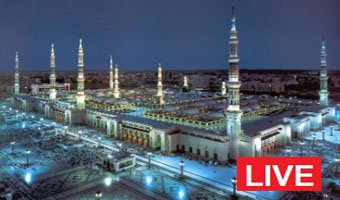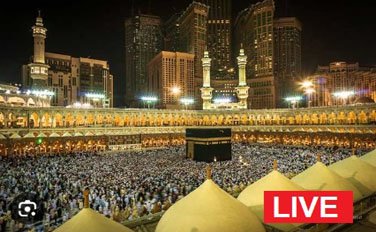Unveiling the History of Bab al-Saghir Cemetery
Nestled amidst the bustling cityscape of Damascus, Syria, lies the Bab al-Saghir Cemetery, a haven of peace steeped in rich history. More than just a burial ground, this tranquil sanctuary serves as the final resting place for revered figures, scholars, and everyday people, whispering tales of the city’s vibrant past. Let’s embark on a journey through time to explore the captivating story of this historic cemetery:

Bab al-Saghir cemetery, adjacent to the Umayyad Mosque, is the final resting place of revered Sahabah and pious predecessors, though not independently verified. Among them:
- Umm Kulthum, daughter of Ali (رضي الله عنه) and Fatima (رضي الله عنها)
- Bilal-bin-Rabah, the Muezzin (caller to prayer) of the Prophet (ﷺ)
- Muawiyah (رضي الله عنه)
- Tomb of Fidha, the maid of Fatima (رضي الله عنها), the daughter of the Prophet (ﷺ)
- Asma, wife of Jafar Tayyar (رضي الله عنه)
- Kamaid bin Aswad al-Kindi, companion of Ali (رضي الله عنه)
- Tomb of Obay ibn Ka’b (رضي الله عنه), husband of Halima, nursing mother of the Prophet (ﷺ)

Baab Sagheer: Tombs of: (From left to right) 1. – Maymunah (Umm-al-Hassan), daughter of Imam Hasan (A.S.) 2. – Asma Bint ‘Umays, wife of Ja’far at-Tayyaar 3. – Hameedah, daughter of Muslim Ibn Aqeel
Early Origins (Uncertain – 12th Century CE)
- Uncertain Date: The exact date of Bab al-Saghir Cemetery’s establishment remains unclear. However, historical evidence suggests it likely emerged as a burial ground sometime between the early Islamic period and the 12th century CE. The cemetery’s name translates to “Small Gate,” possibly referencing a minor gate in the city walls that once existed near the site.
A Flourishing Necropolis (12th Century CE – Present Day)
- 12th Century CE – Onwards: By the 12th century CE, Bab al-Saghir Cemetery becomes a well-established burial ground. Its proximity to the Umayyad Mosque, the grandest mosque in Damascus, elevates its significance. Over the centuries, the cemetery expands to accommodate a diverse range of burials, from prominent scholars and religious figures to ordinary citizens of Damascus.
Revered Tombs and Mausoleums:
- Tomb of Bilal ibn Rabah (رضي الله عنه): Enshrined within Bab al-Saghir lies the tomb of Bilal ibn Rabah (رضي الله عنه), a companion of Prophet Muhammad (ﷺ) and the first muezzin (caller to prayer) in Islam. His tomb is a revered pilgrimage site for Muslims worldwide.
- Other Notable Figures: The cemetery houses the tombs of numerous scholars, jurists, and Sufi mystics who have shaped Damascus’ intellectual and spiritual heritage. Some notable figures include Ibn Taymiyyah, a renowned Islamic scholar, and Muhyiddin Ibn Arabi, a prominent Sufi mystic.
A Sanctuary of Peace:
Bab al-Saghir Cemetery transcends religious and social divisions, serving as a final resting place for people from all walks of life. The serene atmosphere and traditional Islamic tombstones, often adorned with calligraphy, create a sense of tranquility and respect for the departed.
Preserving a Legacy:
In recent times, Bab al-Saghir Cemetery has faced challenges due to urban development and neglect. However, conservation efforts are underway to preserve this historical site and ensure its enduring legacy as a testament to Damascus’ rich past.
A Window into the Past:
Today, Bab al-Saghir Cemetery serves as a valuable resource for historians and cultural enthusiasts. By studying the tombs and inscriptions, one can gain insights into the social, religious, and artistic traditions of Damascus throughout the centuries. The presence of revered figures like Bilal ibn Rabah (رضي الله عنه) further underscores the cemetery’s significance as a place of pilgrimage and spiritual reflection.
Please note that the tombs of two wives of the Prophet Muhammad (peace be upon him), Umm Salama and Ramlah bint Abi-Sufyan (also known as Umm Habeebah), are reportedly located here. However, it is widely doubted that their actual bodies are interred here. These structures likely serve as a place for pilgrimage (ziyarat). Most scholars believe that they are buried in Jannatul-Baqi in Madinah, alongside the majority of the Prophet’s other wives (Ummahatul Mu’mineen).
References: Own Research, Wikipedia.
Please note that this entry is provided for informational purposes only. It is imperative not to engage in praying to graves or seeking supplication through them, as this constitutes associating partners with Allah (ﷻ), which is strictly prohibited.
Related Post: Jordan’s Gems: A Journey Through Historical
Also Read: Madinah Live
May You Like: History of Ephesus

